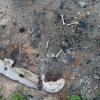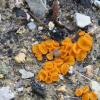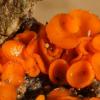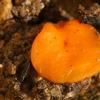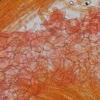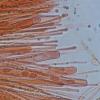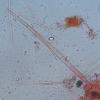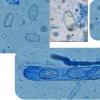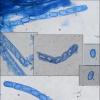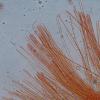
04-11-2025 09:07
Hello.A suspected Hymenoscyphus sprouting on a thi

04-11-2025 12:43
 Edvin Johannesen
Edvin Johannesen
Hi! One more found on old Populus tremula log in O

03-11-2025 21:34
 Edvin Johannesen
Edvin Johannesen
These tiny (0.4-0.5 mm diam.), whitish, short-stip

28-10-2025 15:37
Carl FarmerI'd be grateful for any suggestions for this strik

03-11-2025 16:30
 Hans-Otto Baral
Hans-Otto Baral
Hello I want to ask you if you have found this ye

28-10-2025 19:33
 Nicolas Suberbielle
Nicolas Suberbielle
Bonjour à tous,Je voudrais votre avis sur cette r
 I am trying to identify a Cheilymenia sp. using keys by J. Moravec (1984) found on burnt ground and plant debris (and there was also some dead reamians of fowl)
I am trying to identify a Cheilymenia sp. using keys by J. Moravec (1984) found on burnt ground and plant debris (and there was also some dead reamians of fowl)My first problem is if the spores are striated or not, and in some images stained in cotton blue, I can make vague striations but they can be shadows not striations. I am assuming that they are fine striations and hence attribute the species to Sect. Striatisporae (which include some species that grow on plant debris). The hairless apothecia would lead to be Sect. Coproba and easily keyed to C. granulata, but this is a dung species and excluded for that reason.
Further info:
Excipulum (medullary): Spherical to broadly elliptical usually with obtuse angles forming an isohedral, 30-48 µm wide
Hairs on rim: A few present, scattered, quite inconspicuous and hyaline
Hairs length: (150–)200–400(–450)µm
Hairs morphology Hyaline, straight, sometimes with a swollen tip (or swollen just below the apex) 1- or 2- septate (depending length of hair) with a bulbous basal hypha, ovoid and asymmetric and with a septum just above the base and sometimes a second septum located about the proximal third of the hair length.
Ascum average size 215.3 µm x 12.3 µm
Iodine reaction J -ve
Spore average size 15.2 µm x 8.7 µm
Spore Q factor 1.71
I am inclined over C. theleboloides s.l. likely f. glabra for being almost hairless and which grows on wide range of habitats (and the text says easily confuses with granulata mentioned above !)

